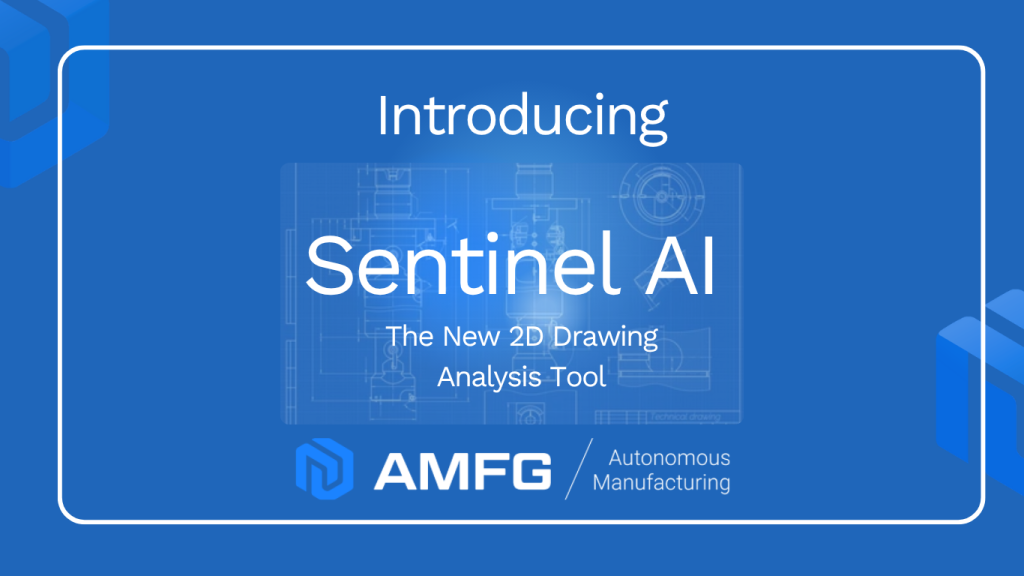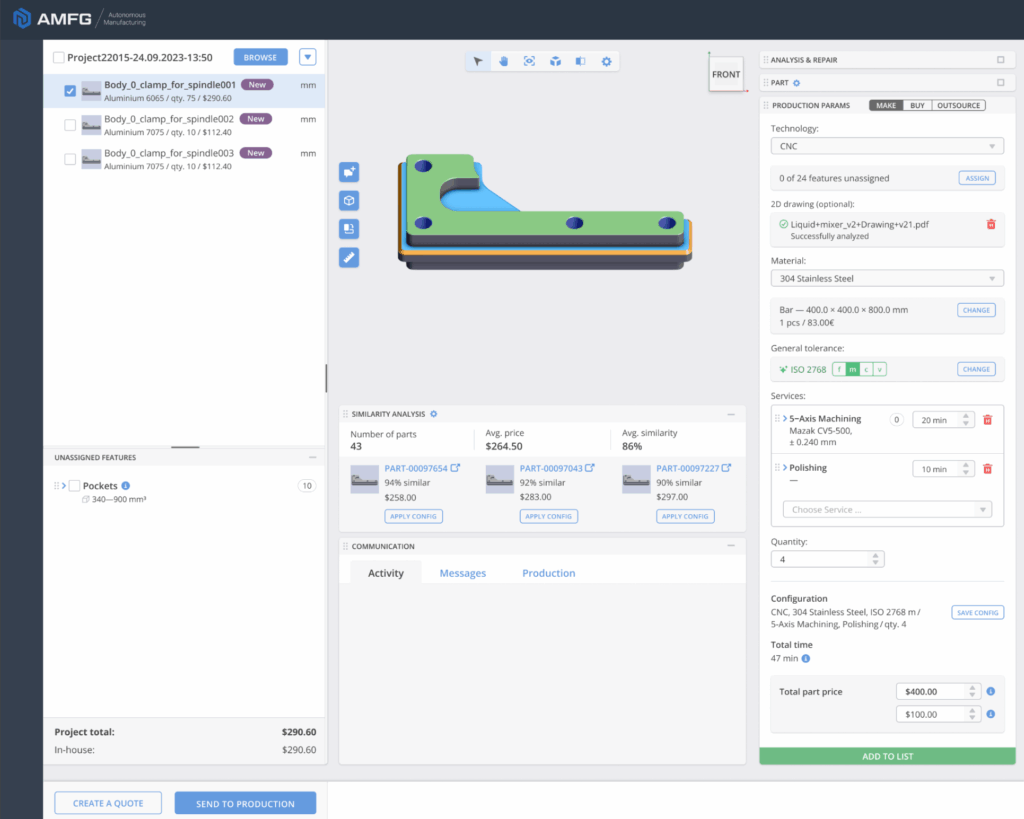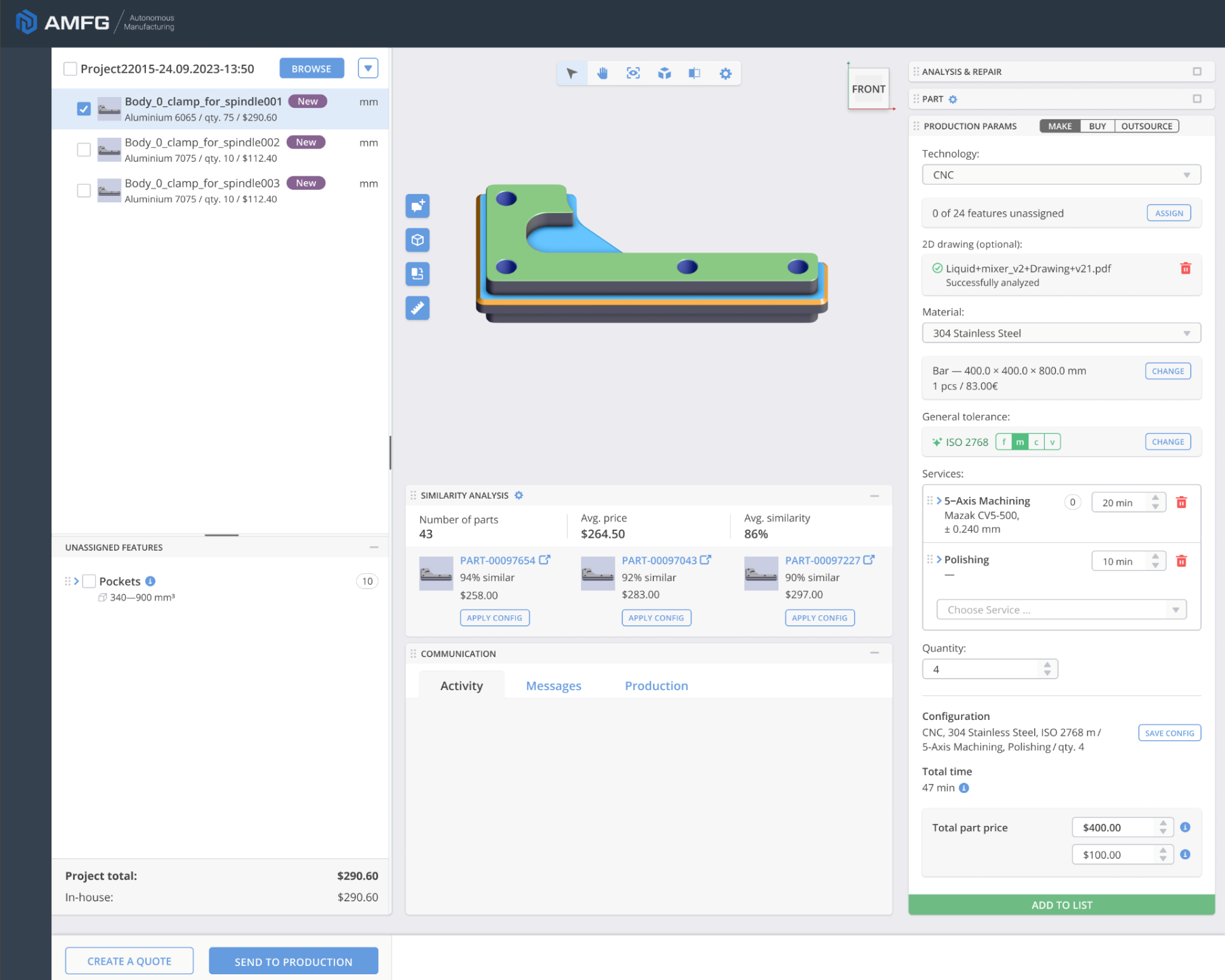AMFG, a provider of quoting and workflow automation software for high-mix, low-volume manufacturers, is rolling out Sentinel AI, a new artificial intelligence tool designed to analyse 2D PDF drawings in under three seconds. Officially launching on July 12, Sentinel AI marks a step toward fully automated PDF analysis. Described by AMFG as the most advanced, AI-enhanced 2D drawing analysis solution on the market, the tool automates data extraction to speed quoting cycles without sacrificing accuracy. Manufacturers integrating Sentinel into their operations will be able to process engineering drawings more rapidly.
Sentinel AI integrates seamlessly into the platform, enabling users to upload a 2D drawing alongside a 3D model for integrated analysis. Once files are submitted, the system scans each drawing to extract title-block information and tolerancing data, as well as material specifications, thread details and surface roughness. The integration extends to existing workflow automation features and retains AMFG’s high-level security certification, allowing customers to upgrade their quoting processes without interrupting ongoing operations.

“Customers can now upload a 2D drawing alongside a 3D model, and Sentinel will scan the drawing and extract certain title-block and tolerancing information from the drawing,” said Toby Dukes, product owner at AMFG. “Sentinel AI will revolutionize the way our customers manage their PDF analysis, cutting down estimating time and reducing the possibility of human error.”
Manufacturers worldwide use AMFG’s software to automate quoting and order management processes. Despite prior advances in automation, manual review of 2D drawings remained a time-consuming bottleneck. Sentinel AI directly addresses this challenge by cutting down estimating time and reducing the possibility of human error.
A webinar to support Sentinel’s launch will demonstrate how to use Sentinel AI to accelerate the estimating process and reduce administrative tasks while maintaining accuracy. Scheduled for July 9, 2025, at 15:30 BST (16:30 CET, 10:30 EST, 08:30 MST, 07:30 PST), the session will cover tool operation and registration details. Click here to register.


AI Defect Detection Enhances Additive Manufacturing
AI-driven tools are increasingly being adopted across advanced manufacturing to automate defect detection, streamline quality assurance, and improve production efficiency. GKN Aerospace, a global aerospace components manufacturer, integrated Interspectral’s AM Explorer into its Engine Systems Centre of Excellence in Sweden to enhance metal 3D printing workflows. The system uses artificial intelligence to monitor and analyse over 400 data points from Nikon SLM Solutions printers, detecting anomalies during the build process and reducing material waste associated with traditional manufacturing. According to GKN, this move supports sustainability by minimizing failed builds, cutting emissions, and shortening lead times.
Isar Aerospace has taken a similar path by implementing nebumind software into its LPBF 3D printing operations. Previously reliant on manual inspection of powder bed images, the company now uses automated image and edge detection algorithms to identify recoater defects during every layer. This shift has significantly reduced analysis time and enabled engineers to focus on high-risk anomalies flagged by the system. Future developments aim to transition nebumind’s defect detection to in-process monitoring and integrate it with CT scan data, allowing for real-time process control and corrective interventions.


AMAA 2025 is here. One event. Countless insights. Secure your space now.
Ready to discover who won the 2024 3D Printing Industry Awards?
Subscribe to the 3D Printing Industry newsletter to stay updated with the latest news and insights.
Featured image shows screenshot of Sentinel AI in action. Image via AMFG.
